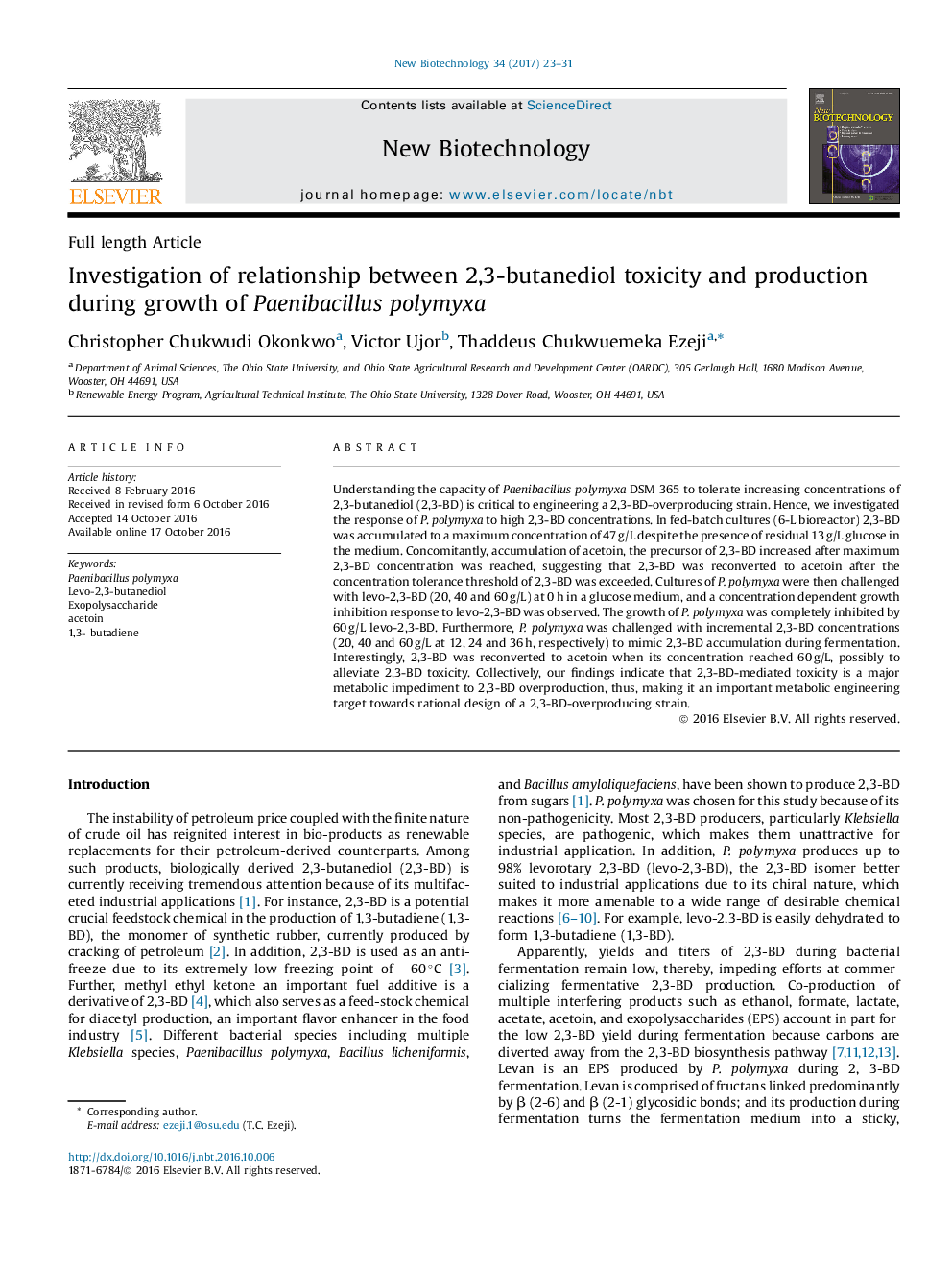| کد مقاله | کد نشریه | سال انتشار | مقاله انگلیسی | نسخه تمام متن |
|---|---|---|---|---|
| 4754953 | 1418379 | 2017 | 9 صفحه PDF | دانلود رایگان |

- Levo-2,3-butanediol (2,3-BD)-mediated feed-back inhibition is a major physiological impediment to 2,3-BD yield.
- Increased levo-2,3-BD concentration in the fermentation medium triggers backward conversion of 2,3-BD to acetoin.
- Levo-2,3-BD mediated toxicity engenders increase in meso-2,3-BD accumulation during fermentation by P. polymyxa.
- Meso-2,3-BD isomer is less inhibitory to P. polymyxa than the levo isomer.
- Increase in levo-2,3-BD concentration decreases glucose utilization by P. polymyxa.
Understanding the capacity of Paenibacillus polymyxa DSM 365 to tolerate increasing concentrations of 2,3-butanediol (2,3-BD) is critical to engineering a 2,3-BD-overproducing strain. Hence, we investigated the response of P. polymyxa to high 2,3-BD concentrations. In fed-batch cultures (6-L bioreactor) 2,3-BD was accumulated to a maximum concentration of 47Â g/L despite the presence of residual 13Â g/L glucose in the medium. Concomitantly, accumulation of acetoin, the precursor of 2,3-BD increased after maximum 2,3-BD concentration was reached, suggesting that 2,3-BD was reconverted to acetoin after the concentration tolerance threshold of 2,3-BD was exceeded. Cultures of P. polymyxa were then challenged with levo-2,3-BD (20, 40 and 60Â g/L) at 0Â h in a glucose medium, and a concentration dependent growth inhibition response to levo-2,3-BD was observed. The growth of P. polymyxa was completely inhibited by 60Â g/L levo-2,3-BD. Furthermore, P. polymyxa was challenged with incremental 2,3-BD concentrations (20, 40 and 60Â g/L at 12, 24 and 36Â h, respectively) to mimic 2,3-BD accumulation during fermentation. Interestingly, 2,3-BD was reconverted to acetoin when its concentration reached 60Â g/L, possibly to alleviate 2,3-BD toxicity. Collectively, our findings indicate that 2,3-BD-mediated toxicity is a major metabolic impediment to 2,3-BD overproduction, thus, making it an important metabolic engineering target towards rational design of a 2,3-BD-overproducing strain.
Journal: New Biotechnology - Volume 34, 25 January 2017, Pages 23-31